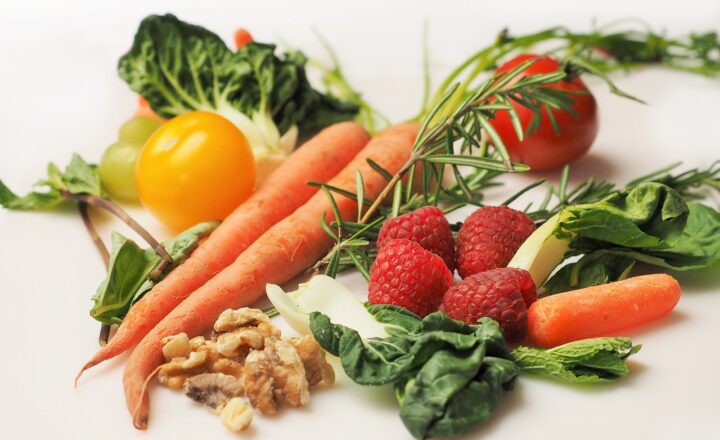Understanding Nutrition Labels: How to Make Healthier Choices at the Grocery Store
November 11, 2024

Nutrition labels can be a powerful tool in making healthier choices at the grocery store, but they can also be confusing and overwhelming. Many people struggle to decode the often-complex information presented, leading to poor dietary decisions. In this article, we will break down the essential elements of nutrition labels so you can shop smarter.
1. What is a Nutrition Label?
A nutrition label provides detailed information about the nutritional content of a food product. It helps consumers understand the ingredients and nutritional value of their food, enabling them to make better dietary choices. According to the FDA, all packaged foods must have a nutrition label, including frozen meals, snacks, beverages, and even dietary supplements.
Nutrition labels typically include information such as serving size, calories, fats, carbohydrates, proteins, and vitamins. Understanding these components can help you evaluate whether a food fits into your dietary needs and goals.
2. Key Components of Nutrition Labels
Let’s explore each part of the nutrition label in detail:
- Serving Size: This indicates the amount of food that is typically consumed in one serving. It’s crucial as all other nutritional information on the label is based on this quantity. Pay attention to how many servings are in a package; it’s easy to consume more than you realize.
- Calories: This represents the total number of calories per serving. Monitoring your calorie intake is essential for weight management. Remember that each person has different daily caloric needs, depending on factors such as age, sex, and activity level.
- Nutrients: Nutrient amounts are typically expressed in grams or milligrams. Key nutrients that are often highlighted include:
- Fats: Look for types of fat such as saturated fat and trans fat. Ideally, you want to limit saturated fats and avoid trans fats altogether as they are linked to negative health effects.
- Cholesterol: High cholesterol levels can lead to heart disease, so it’s essential to monitor your intake through diet.
- Sodium: High sodium intake is linked to high blood pressure. Aim for lower-sodium options, especially if you have cardiovascular concerns.
- Carbohydrates: This includes total carbs, dietary fiber, sugars, and added sugars. Focus on whole food sources that are high in fiber and contain natural sugars instead of processed foods with high added sugars.
- Proteins: Proteins are essential for muscle repair and development. Look for high-quality sources of protein in your diet.
- Vitamins and Minerals: Labels often list essential vitamins and minerals like Vitamin D, calcium, and iron. These nutrients are essential for various bodily functions and should be incorporated into your diet for overall health.
- Percent Daily Values (%DV): This indicates how much a nutrient in a serving contributes to your overall daily diet. A %DV of 5% or less is considered low, while 20% or more is high. Use this information to help you determine if a food is high or low in specific nutrients and to track your daily consumption.
3. How to Read Nutrition Labels Effectively
Now that you understand the components of a nutrition label, here are some tips for reading them effectively:
- Always Check the Serving Size: Before evaluating the nutritional content, ensure you know the serving size. This will prevent you from miscalculating your intake.
- Limit Saturated and Trans Fats: Look for low percentages of saturated fats and trans fats. Consider opting for unsaturated fats that are healthier for your heart, such as those found in avocados, nuts, and olive oil.
- Watch Sodium and Sugar Content: High sodium and added sugars are indicators of processed foods, which can be unhealthy if consumed excessively. Aim for products that are lower in these ingredients.
- Prioritize Fiber and Protein: Foods high in fiber and protein can help you feel fuller longer, which is excellent for weight management and overall health.
- Check for Whole Food Ingredients: Ingredients should be easy to recognize. The shorter the ingredient list, the better. Seek out whole food ingredients rather than highly processed ones.
4. Common Nutrition Label Myths Debunked
There are several misconceptions concerning nutrition labels. Here are a few clarified:
- Myth 1: All Fats are Bad: Not all fats are created equal. Healthy fats from sources like fish, nuts, and avocados are essential for brain health.
- Myth 2: Low-Fat Foods are Always Healthier: Low-fat foods often replace fat with sugar and other unhealthy additives, negating any health benefits.
- Myth 3: A Low Calorie Food is Always Healthy: Calories alone do not determine whether a food is healthy. It’s essential to consider nutrient density and how foods fit into your overall diet.
By debunking these myths, you can make more informed choices at the grocery store.
5. Practical Tips for Grocery Shopping
To make healthier choices effectively, consider these shopping strategies:
- Plan Your Meals: Make a grocery list based on your meal plans for the week. This will help you avoid impulse purchases and stick to healthier options.
- Shop the Perimeter of the Store: Fresh produce, dairy, and lean proteins are often located around the store’s perimeter. The inner aisles typically contain highly processed and unhealthy options.
- Read Nutrition Labels While Shopping: Take the time to compare products while shopping. Choose items with lower added sugars, sodium, and unhealthy fats.
- Keep Healthy Snacks on Hand: Replace unhealthy snacks with healthier alternatives. For instance, opt for nuts, fruits, or yogurt instead of chips or cookies.
Adopting these strategies can help you make better choices while grocery shopping.
Conclusion
Understanding nutrition labels is an essential skill for making healthier food choices. By mastering how to read and interpret them, you can better navigate the grocery store and make informed decisions that benefit your overall health. Remember that moderation is key; it’s about balance rather than restriction. Empower yourself with knowledge, and take charge of your dietary habits!
Happy shopping!







